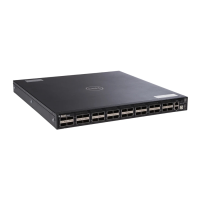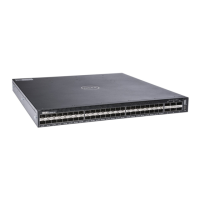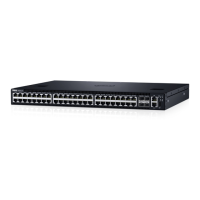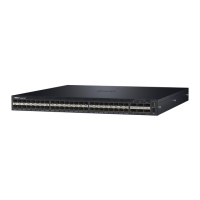Legacy DCBx (CIN and CEE) supports the DCBx control state machine that is defined to maintain the
sequence number and acknowledge the number sent in the DCBx control TLVs.
DCBx Example
The following figure shows how to use DCBx.
The external 40GbE 40GbE ports on the base module (ports 33 and 37) of two switches are used for
uplinks configured as DCBx auto-upstream ports. The device is connected to third-party, top-of-rack
(ToR) switches through 40GbE uplinks. The ToR switches are part of a Fibre Channel storage network.
The internal ports (ports 1-32) connected to the 10GbE backplane are configured as auto-downstream
ports.
Figure 31. DCBx Sample Topology
DCBx Prerequisites and Restrictions
The following prerequisites and restrictions apply when you configure DCBx operation on a port:
• For DCBx, on a port interface, enable LLDP in both Send (TX) and Receive (RX) mode (the protocol
lldp mode
command; refer to the example in CONFIGURATION versus INTERFACE Configurations
in the Link Layer Discovery Protocol (LLDP) chapter). If multiple DCBx peer ports are detected on a
local DCBx interface, LLDP is shut down.
• The CIN version of DCBx supports only PFC, ETS, and FCOE; it does not support iSCSI, backward
congestion management (BCN), logical link down (LLDF), and network interface virtualization (NIV).
Configuring DCBx
To configure DCBx, follow these steps.
For DCBx, to advertise DCBx TLVs to peers, enable LLDP. For more information, refer to Link Layer
Discovery Protocol (LLDP).
266
Data Center Bridging (DCB)
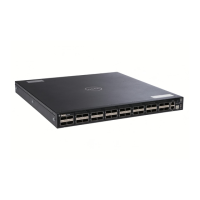
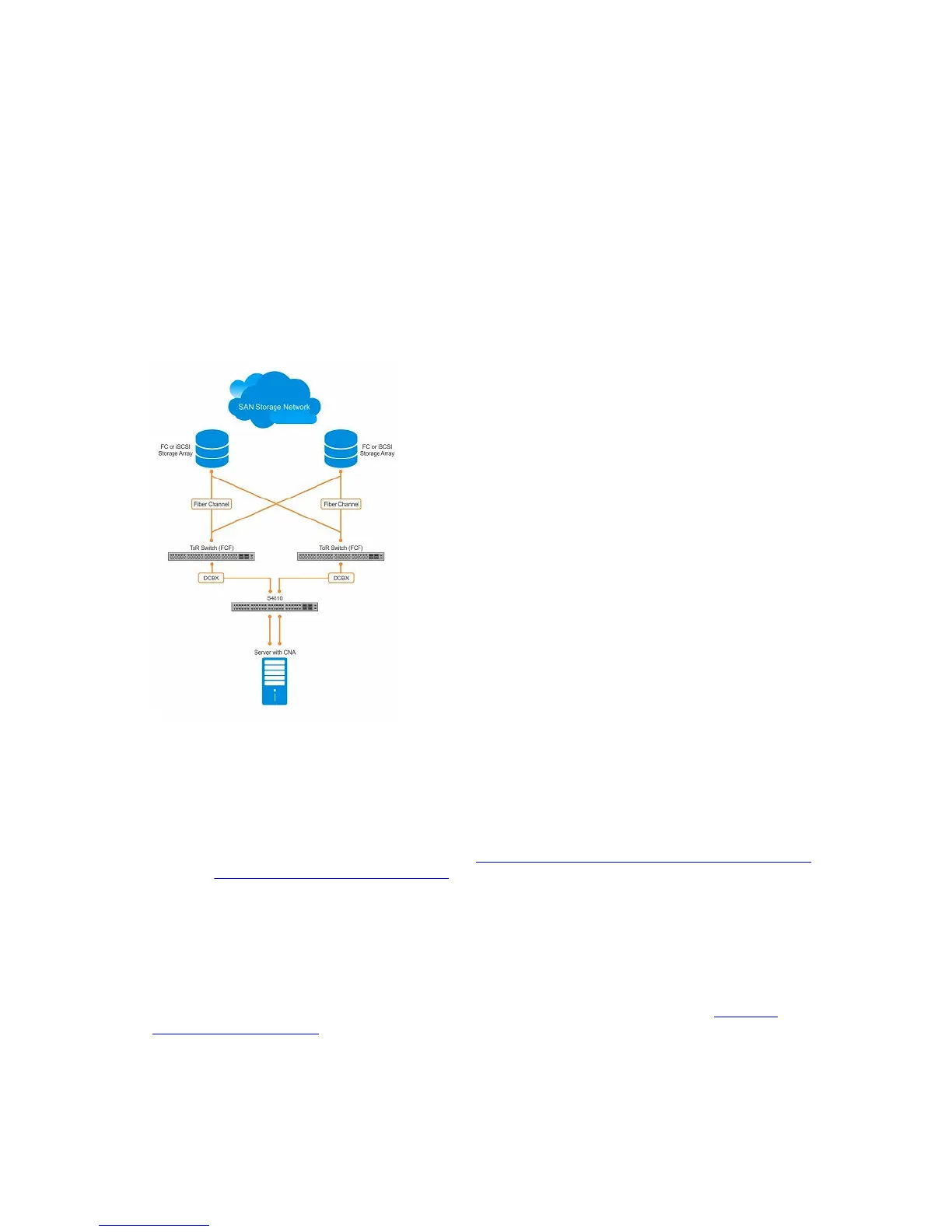